CHICAGO MAKES US

by Sophie Lucido Johnson (MFA 2017)
Portraits and Video by Greg Stephen Reigh (BFA 2013)
Chicago is a city of neighborhoods. There are 77 in total, covering more than 200 square miles, and each has its own identity: the Loop’s hustle, Hyde Park’s rich culture and history, Wicker Park’s iconic murals. When you visit a different neighborhood, it often feels like you’re visiting a different city.
Because of these neighborhoods, there is no one Chicago, but together, they create a distinct, uniquely midwestern home for the School of the Art Institute of Chicago’s (SAIC) artists, designers, and scholars. In conversation, there are certain aspects of living in the city that come up again and again. A welcoming spirit that emphasizes collaboration. The freedom to take risks away from the commerce of the coasts. A sense that, because of the city’s diversity and vastness, you can always find a creative home for your work, no matter what outlandish form it takes. And of course, the ways that the city’s neighborhoods nurture communities but also highlight the inequities that persist for their residents.
For more than 150 years, SAIC’s artists and designers have been inspired by the wonders and complexities of living here. SAIC alums Teresita Carson (BFA 2018), Anthony Sims (MFA 2022), and Bun Stout (MFA 2020), and faculty members Adam J. Greteman and Anne Wilson talked to the School of the Art Institute of Chicago magazine about how the city has rooted and helped grow their work.
MEET THE MAKERS
READ THEIR STORIES
↓
The Seeker:
Teresita Carson
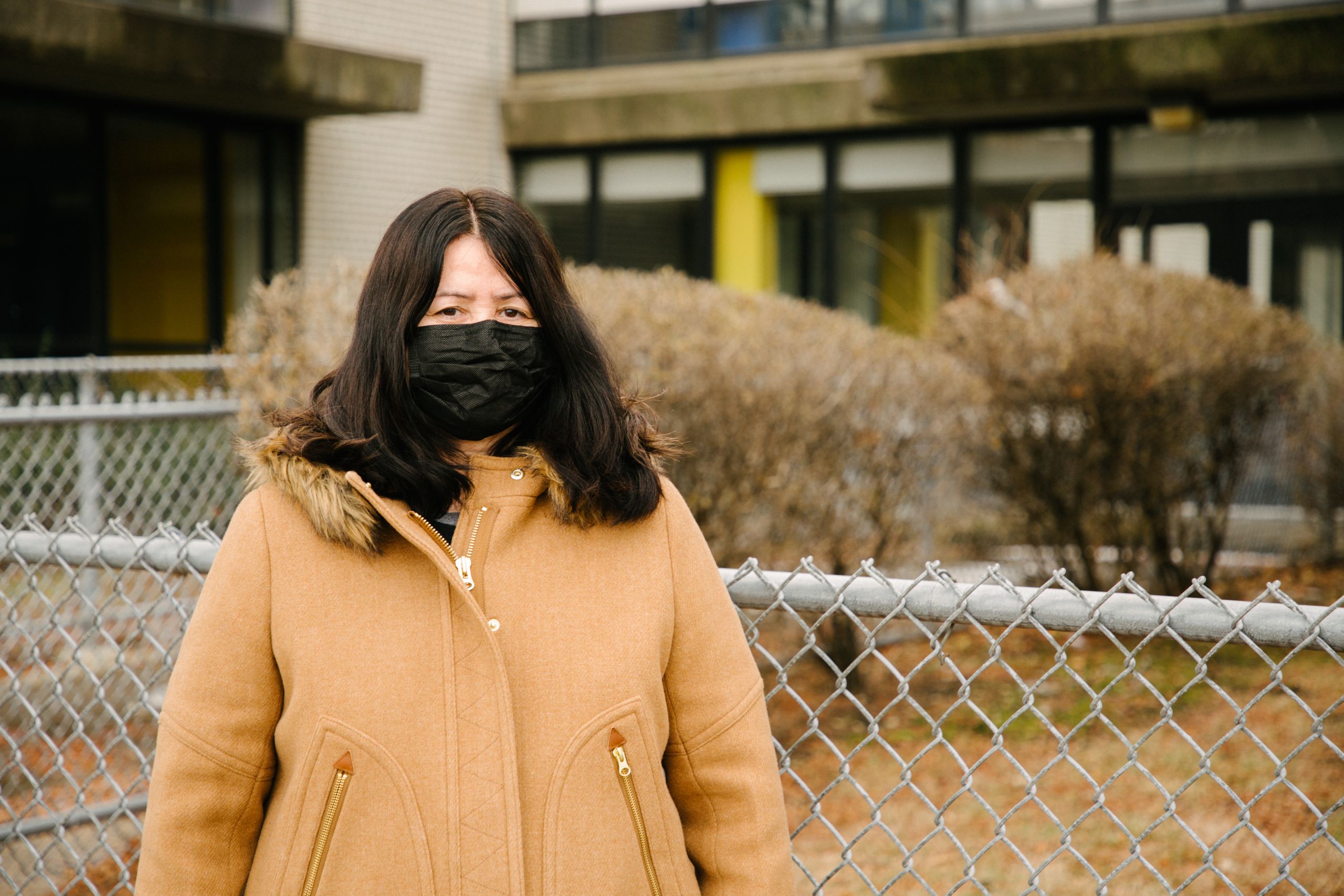
It’s important to Teresita Carson that she lives in Chicago’s Bronzeville neighborhood.
“I love living on the South Side because it feels like a caring community despite its people being underserved,” she said, adding, “I chose to live here because I need to feel what’s at stake and have these conversations every day.”
Carson moved to Chicago from Los Angeles in 2016 to finish her degree at SAIC. An immigrant from Mexico, at first Carson felt alienated and out of place. She began seeking out Mexican grocery stores and businesses, searching for signifiers of her people.
“I found the main visual signifier, the flag that Mexicans plant everywhere they go to say, ‘We are here.’ The image of the Virgin of Guadalupe put me on my current path.” She added, “The city invited me—urged me to ask different questions about the nature of the migrations of people, objects, and culture.”
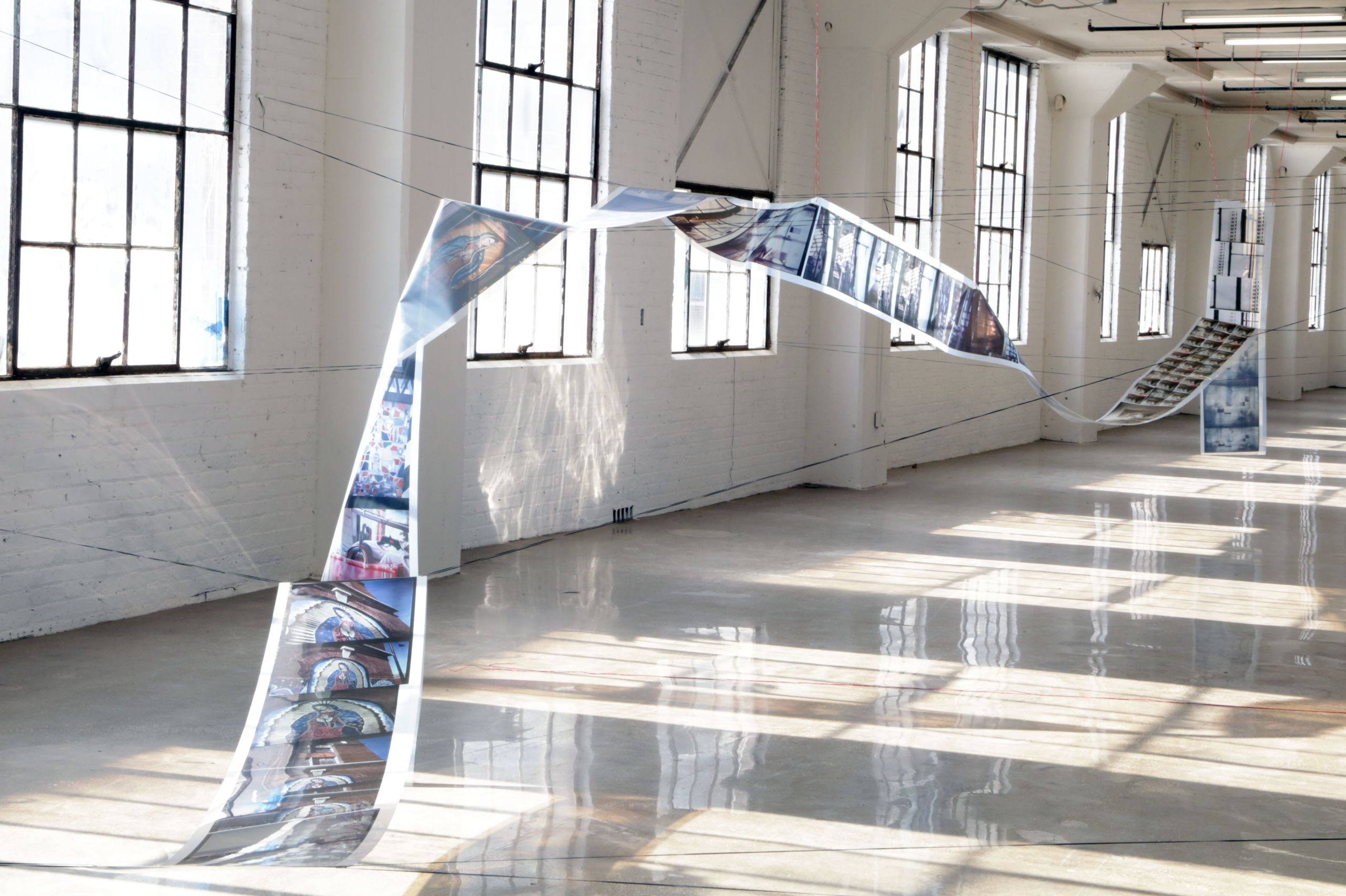
Teresita Carson, Return to Tepeyac. Image courtesy of the artist
Teresita Carson, Return to Tepeyac. Image courtesy of the artist
Carson’s work integrates that imagery in surprising and exciting ways. She combines disciplines to signify both resistance and celebration as they relate to Chicago, such as in her piece Return to Tepeyac. She wants to draw attention to the rich Mexican cultural imagery she’s found in the neighborhood of Pilsen, while speaking out against the ways in which inequalities persist for residents of the city’s South and West Sides.
Many of Carson’s works are huge installations, echoing the volume of the influence of Mexican culture on the city of Chicago. Her work springs from the images Carson takes in while moving around Chicago’s neighborhoods, and part of its gorgeous complexity comes from Carson’s refusal to look away from how lack of economic opportunity and development have ravaged certain areas of the city.
“If I’m driving in a decimated neighborhood, I can choose to look at the dilapidated infrastructure and feel badly. Or I can choose to look at the people walking by and see possibilities,” Carson said.
The Newcomer:
Anthony Sims
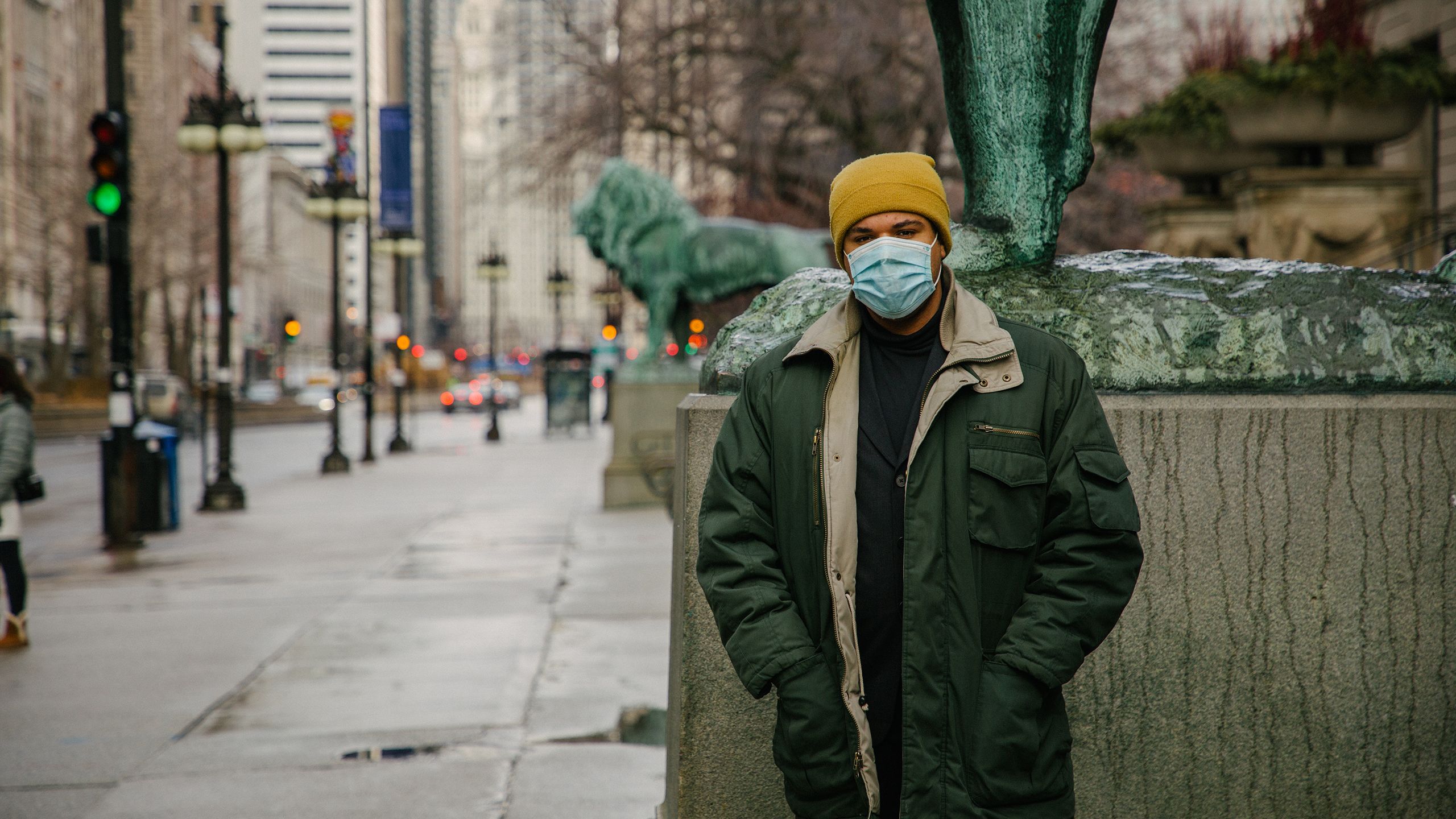
“Chicago, for me, is a city of dreams,” said Anthony Sims. He was quickly amazed by the amount and quality of spaces to show work in the city, as well as by his ability to access them and show work as an artist here.
Sims, who is a performance artist, has only lived in the city since 2019, but already his work has been featured in the Museum of Contemporary Art Chicago and recognized with several commissions and residencies.
Really, that’s not surprising. Sims’s work is powerful and resonant. He uses performance to embody Black and queer experiences, integrating movement, stillness, experimentation, language, and installation in ways that feel fresh and exciting, such as in his Body/Space series.
Sims said that his success has come because he’s made the decision to be present in the city. As a Black, queer, southern man, he was determined to expand his orbit and take up space in his art making. “I determine my own worth first. When others witness that, then I get a lot of attention,” he said.
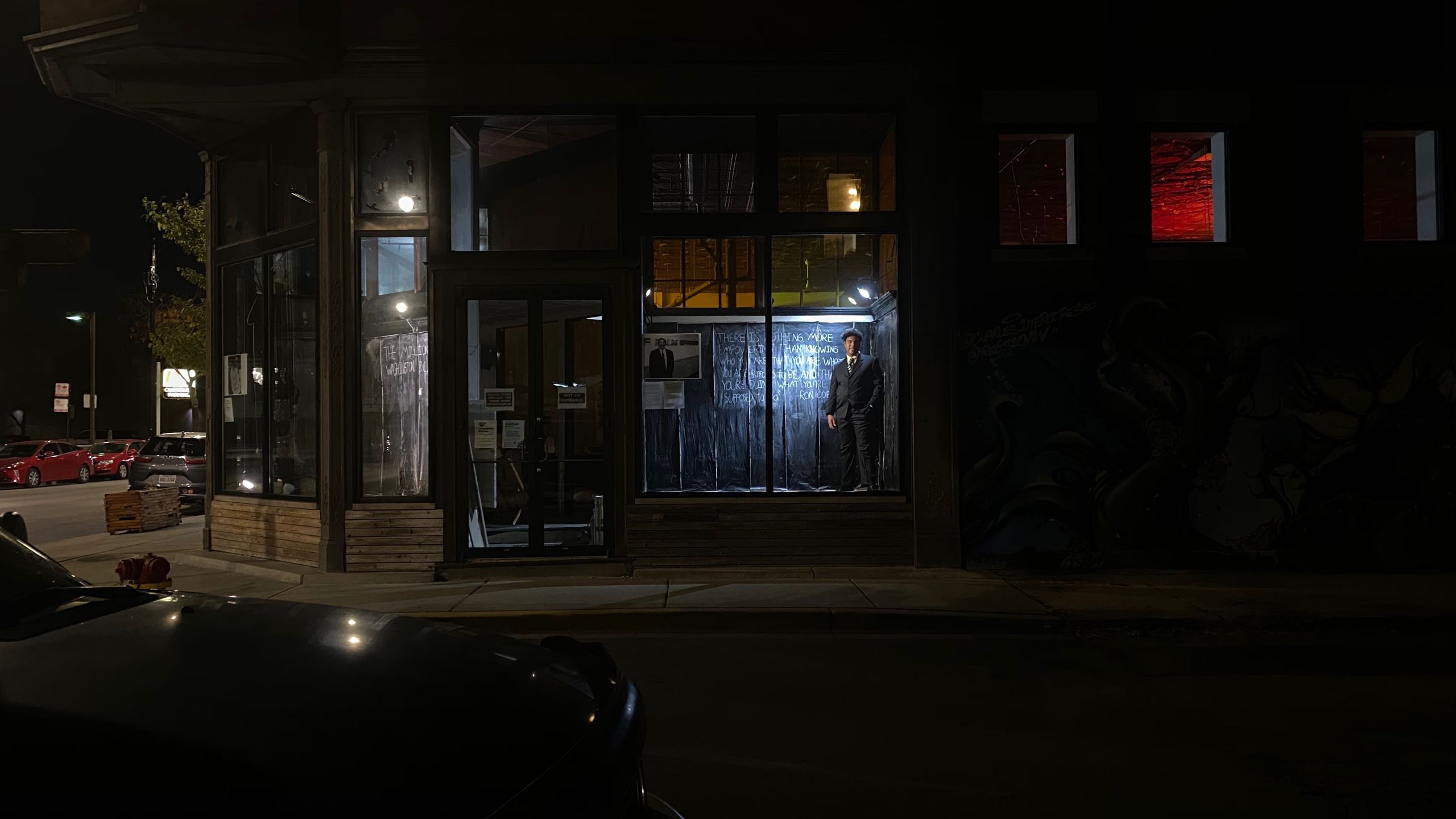
Anthony Sims, Body/Space. Image courtesy of the artist
Anthony Sims, Body/Space. Image courtesy of the artist
In his work, Sims doesn’t look away from the city’s issues, especially because he bears witness to them every day. Sims remembers vividly his earliest experiences riding the “L” in Chicago.
“I remember boarding the Red Line at Belmont, and nobody looked like me. The more south we went, those people got off the train, and more people started to look like me. I was shocked,” he said. “I think how this plays into my practice is that it showcases pinpoint locations that I can disrupt.”
The Collaborator:
Bun Stout
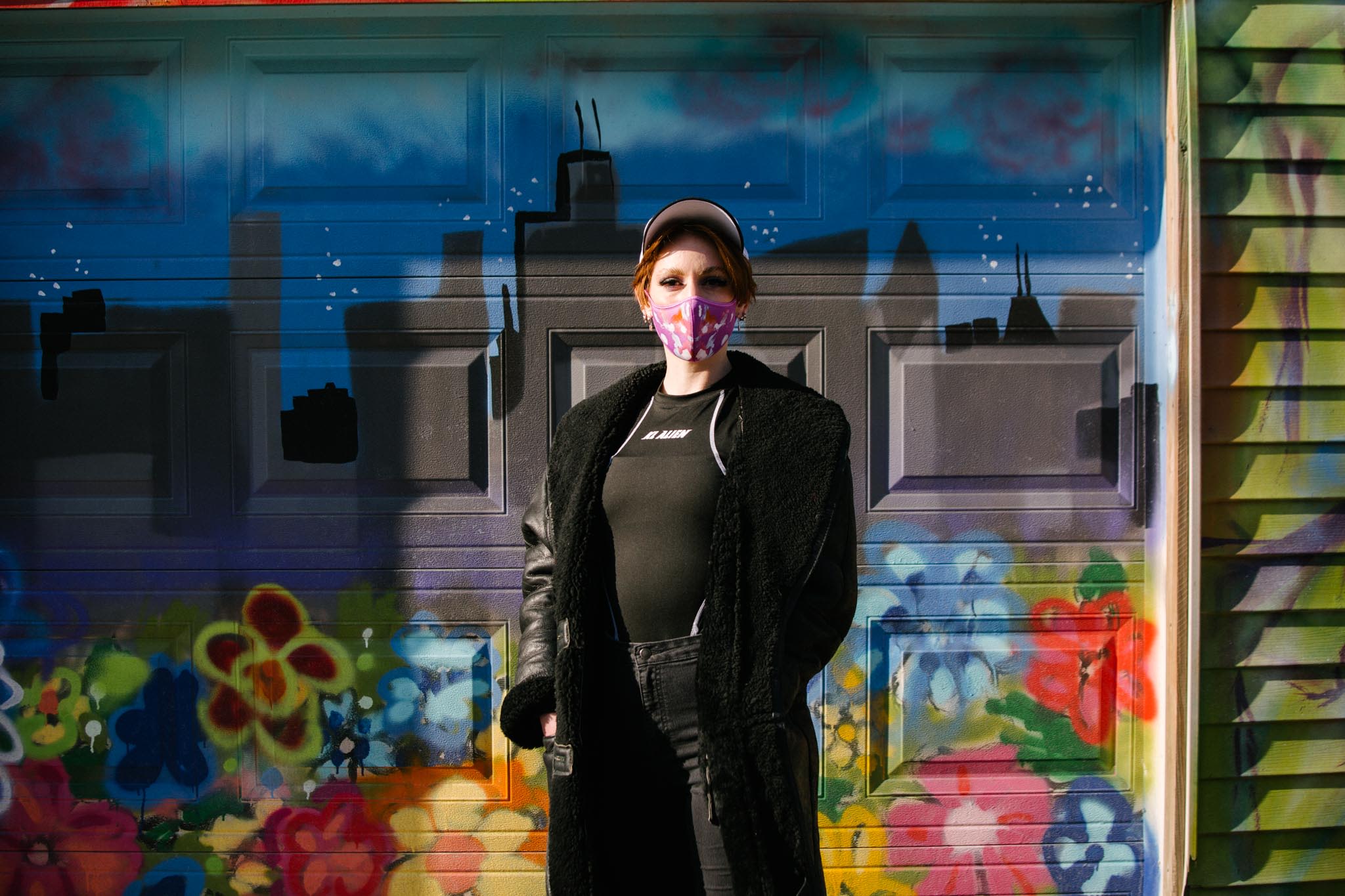
Bun Stout moved to Chicago in 2015 from rural Indiana. They see the unique geography of the city as conducive to extraordinary creative energy. Being away from the culture-heavy coasts “causes artists and creators to collaborate, boost each other's work, give each other opportunities, and join forces to create and think bigger,” Stout said.
Stout knows that, as a young, white, queer artist, they have to be aware of their potential position as a gentrifier in the city of Chicago and acknowledge this in their practice.
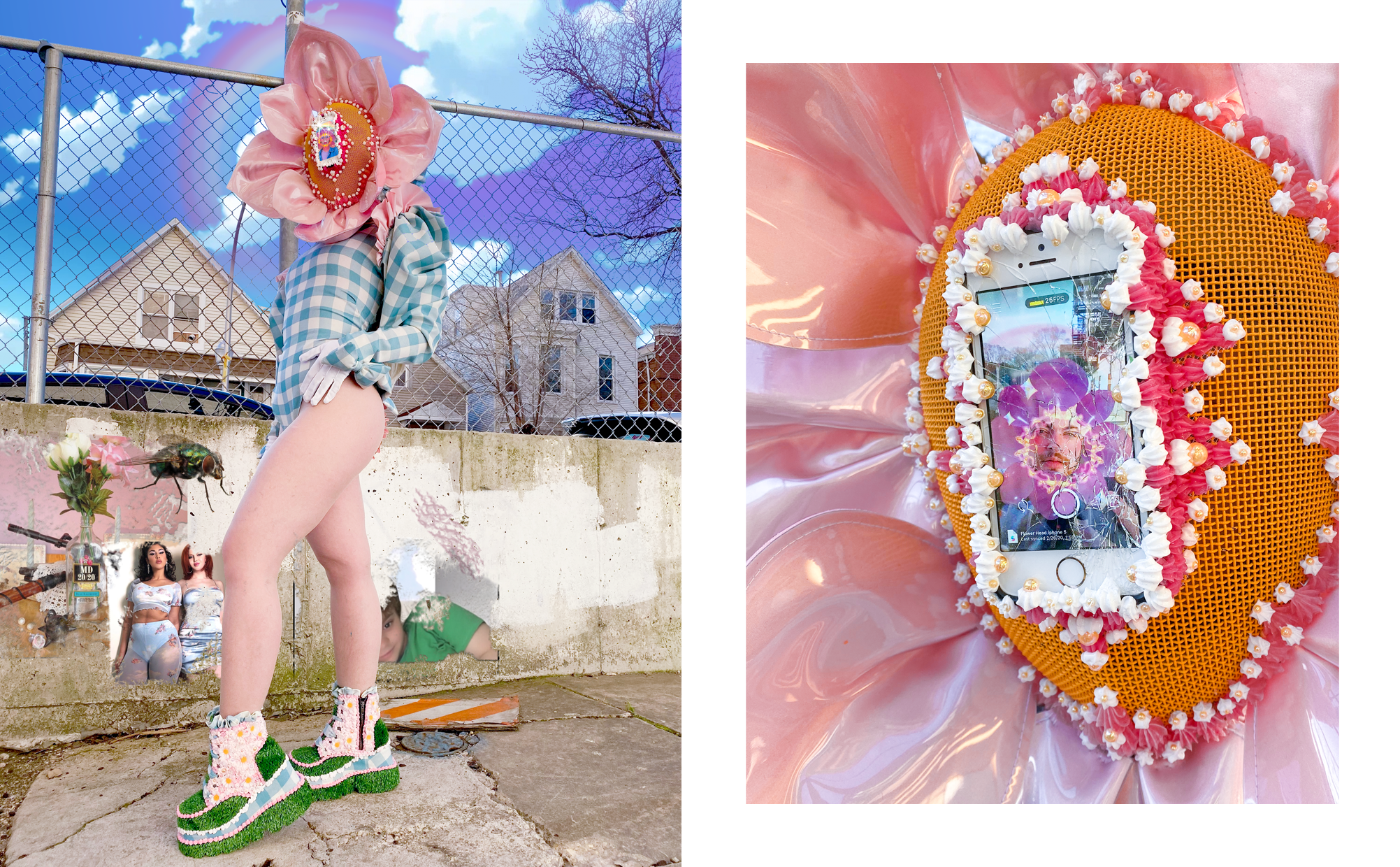
Bun Stout, S/S 2029: Jester. Image courtesy of the artist
Bun Stout, S/S 2029: Jester. Image courtesy of the artist
“All culture in Chicago is in debt to Black and Brown creatives. It doesn’t matter how I perceive that histories of racism and oppression speak to my work because this history is the context in which artwork here lives,” Stout said.
Keeping these privileges in mind, Stout has made a Chicago-centered life for themselves and for their artwork. “There is hope, purpose, belonging, and material means here that were not accessible to trans folks where I was before.”
Before Stout moved to Chicago, they were making prints, drawings, and portraits of midwestern trans and queer folks. In Chicago, their work has taken on a whole new scope, which is on full display in their piece S/S 2029: Jester. They are focused now on making wearable artworks from, as they put it, “an imaginary future.” Or, put another way, “they’re garments and accessories for spaces where self-creation is a survival art practice.”
Chicago’s enormous creative community has allowed Stout’s work to transform and evolve. “In Chicago I can be a speck of dust in a much bigger constellation, making things that go beyond me, get worn and photographed and destroyed out in the world. I like getting lost within a huge creative energy.”
The Connector:
Adam J. Greteman
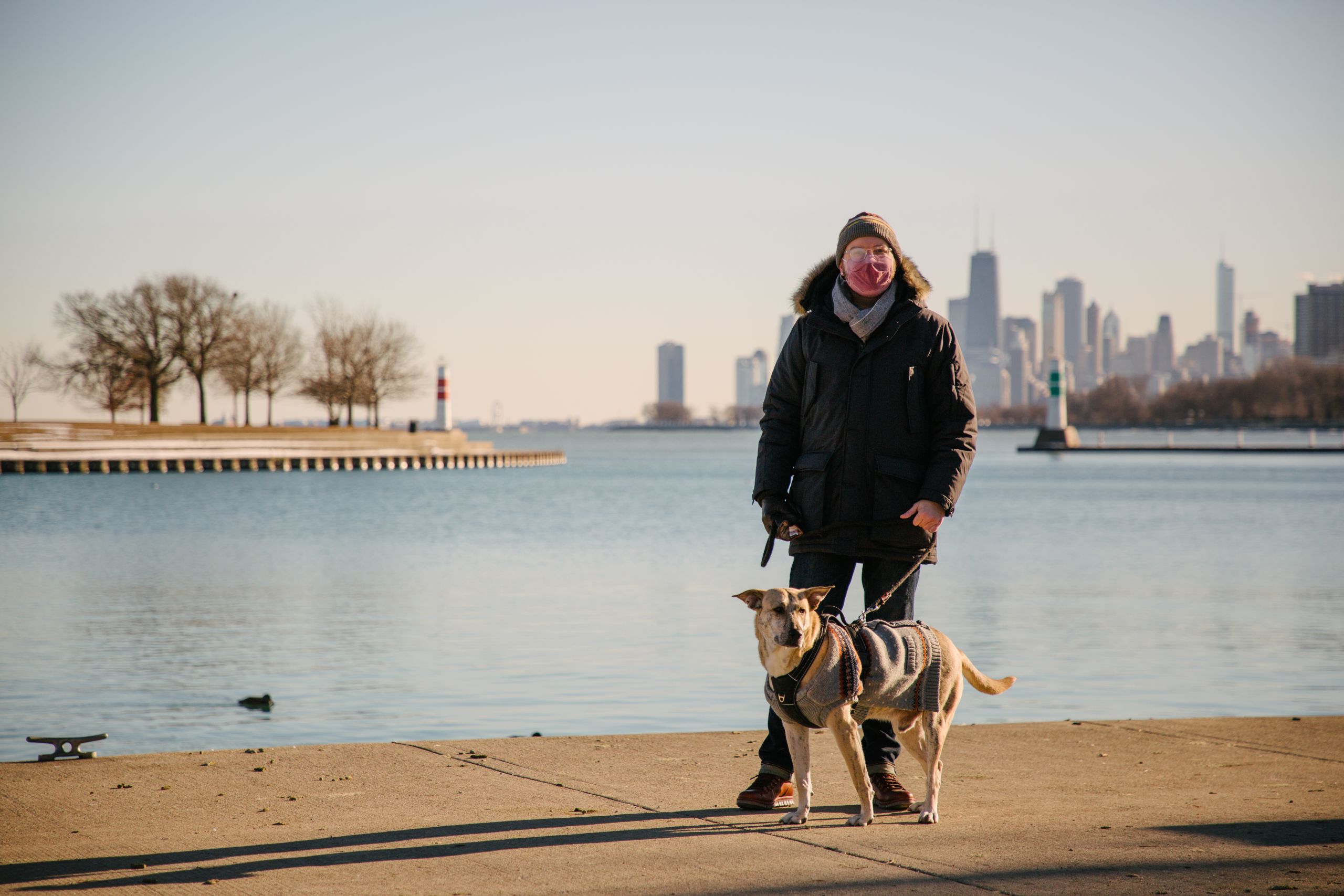
Adam J. Greteman’s work has never been about him alone. An assistant professor of art education and director of SAIC’s Master of Arts in Teaching program, Greteman’s scope of accomplishments is huge, but one of his greatest legacies is The Intergenerational LGBTQ+ Dialogue Project. The project brings together LGBTQ+ elders (65+) and young people (18+) to, quite simply, talk.
“Such conversations are never simple as they emerge amidst historic realities that have sought to keep LGBTQ+ generations separate,” said Greteman, a co-founder of the project.
Greteman thinks Chicago is particularly set up for these conversations because of its strong, diverse LGBTQ+ community—and, incidentally, Chicago is particularly set up for Greteman himself. He moved here for practical, economic, personal, nostalgic, and educational reasons—and also to be near Northalsted (the area formerly known as Boystown), which Greteman described as “a gay reason.”
Northalsted is only one part of Chicago’s LGBTQ+ legacy. In 1924, Henry Gerber founded the Society for Human Rights in Chicago, the first documented gay rights organization in the US. LGBTQ+ activists mobilized in the city in the 1960s alongside the civil rights movement; in the 1980s, the Chicago Gay and Lesbian Democrats was a major political force in the city and ACT UP/Chicago formed to improve the lives of people with HIV/AIDS.
This history and sense of community is a big part of why The Intergenerational LGBTQ+ Dialogue Project has thrived in the city, and Chicago’s complex legacy is central to Greteman’s work as a whole.
“For me a key task for my work as a teacher-educator and educational philosopher is to grapple with such complexities in a myriad of ways, so not to ignore either the legacies of violence and exclusion or the legacies of resistance and resilience; work that for me does justice to the complexities of Chicago and its stories,” Greteman said.
The Legend:
Anne Wilson
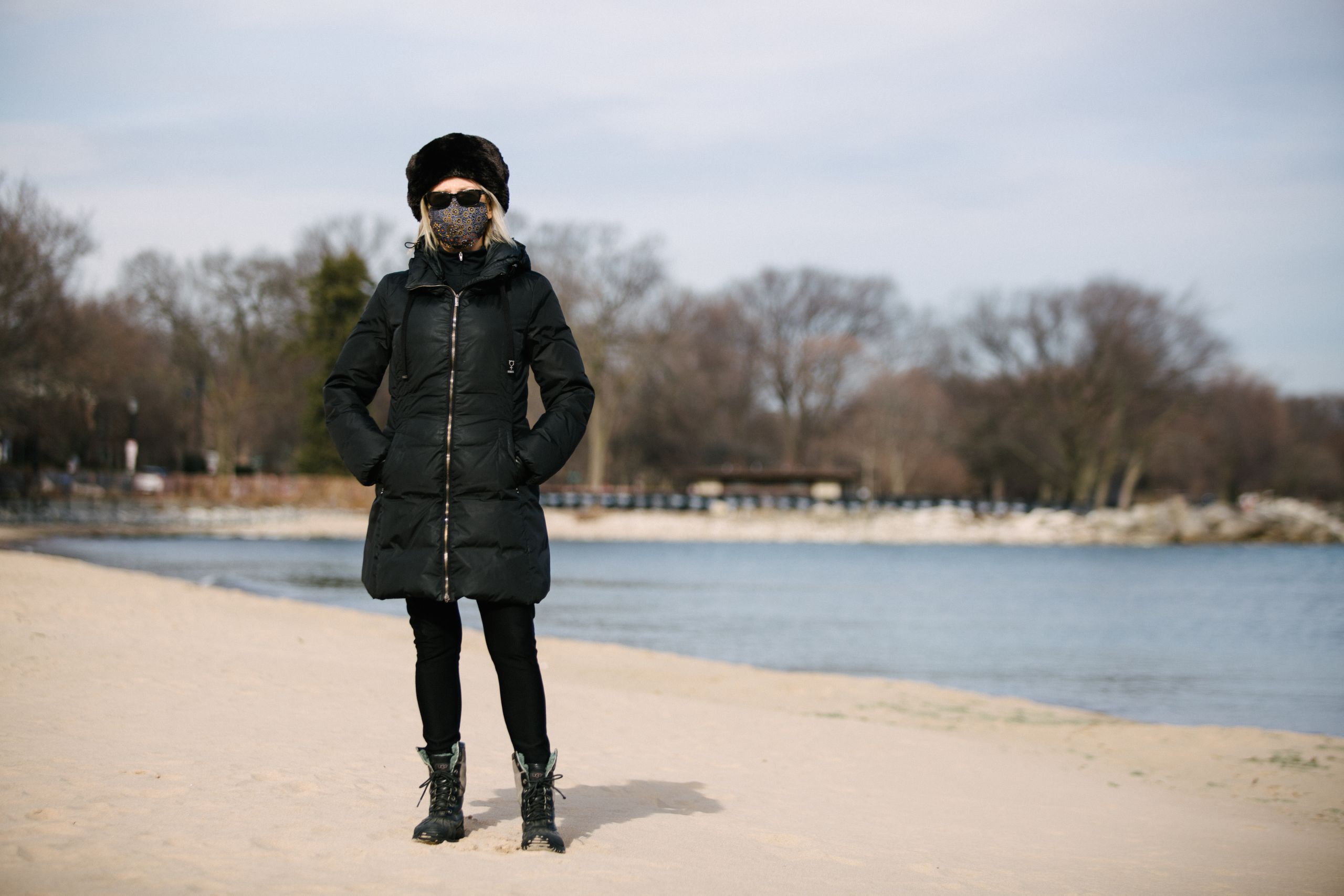
Everyone seems to know fiber artist and SAIC Professor Emeritus Anne Wilson. Her work, which she says “has always been grounded in a textile language,” is ubiquitous, the power of which you can see in her recent piece If We Asked About The Sky. From her recent solo show at the Rhona Hoffman Gallery to pieces in the permanent collections of museums all over the world, Wilson has established herself as a force of nature in the Chicago art scene.

Anne Wilson, If We Asked About The Sky. Image courtesy of the artist
Anne Wilson, If We Asked About The Sky. Image courtesy of the artist
“Chicago shaped my work as an artist and educator with two really important opportunities,” Wilson said. This included exhibiting her work at the Roy Boyd Gallery and Rhona Hoffman Gallery and the opportunity to work with colleagues and students at SAIC to develop a conceptually driven, research-based field of practice that came to be the School’s Fiber and Material Studies department.
“The opportunity to work collaboratively in education, to build an ethos that values diversity and inclusiveness—projecting new forms of art while honoring traditions—I feel these collaborations as educators impact young artists as they move out into the world and make a mark—often in the city of Chicago,” Wilson said.
That field of study has grown to embrace values of diversity and inclusiveness while integrating a collaborative energy that many SAIC community members have identified as uniquely Chicagoan. In recent years, the department has gained renown as being one of the largest and most all-encompassing in the world.
“Textile materiality—in all the alliances with the everyday and to global cultural histories—has tremendous potential to speak to issues of our humanness and carry diverse cultural narratives,” said Wilson.
As an educator, Wilson is uniquely situated to see how the city of Chicago benefits her students, even after they leave SAIC. She said that she’s noticed more and more graduating students choosing to make Chicago their home “because of the kind of energy, possibility, and community they feel in this city.” ■

